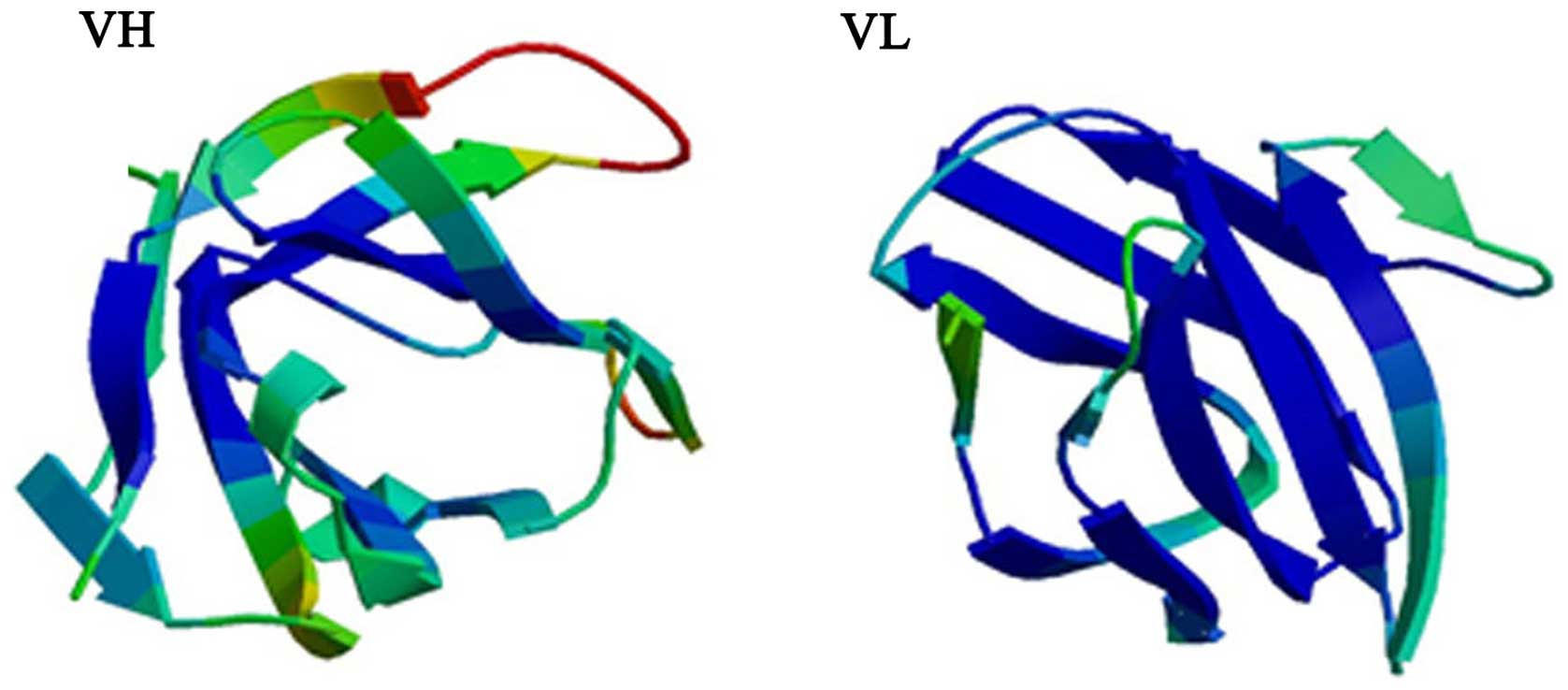Investigation of the structure of anti‑human seminal plasma protein single‑chain antibody and its association with linker peptide length
- Authors:
- Published online on: June 22, 2015 https://doi.org/10.3892/mmr.2015.3980
- Pages: 4117-4122
-
Copyright: © Jiang et al. This is an open access article distributed under the terms of Creative Commons Attribution License [CC BY_NC 3.0].
Metrics:
Total
Views: 0 (Spandidos Publications: | PMC Statistics:
)
Total PDF Downloads: 0 (Spandidos Publications: | PMC Statistics:
)
Abstract
To enhance the activity of seminoprotein single‑chain variable fragment (γ‑Sm‑ScFv) antibodies, modulation of the length of the linker peptide, which connects the variable region of the heavy chain (VH) and the light chain (VL) of single‑chain antibodies, was performed in the present study. Homologous modeling of single VH and VL were performed, respectively. Subsequently, modeling of the whole ScFv sequence, which was previously modified with added linkers of different lengths was also performed, and the (Gly4Ser)n peptide chain structure was used as the linker. The similarities between VH and VL prior to and following the addition of the linker were compared by applying the algorithm of protein similarity, based on spherical coordinates layering. In addition, changes in the fore and aft distance, and diffusion radius were calculated using a MATLAB tool, based on which changes in structural stability were analyzed. Finally, the single‑chain antibody was assessed in a nude mouse model. When n=3 or n=6, the similarity between the original distance and VH and VL were the highest, and the fore and aft distance and diffusion radius were relatively close. In addition, the nude mouse model indicated that, when n=3 or n=6, the inhibitory rate of the single‑chain antibody against tumor cells was significantly higher, compared with the other linker peptides of different lengths. The effect of structural changes of the linker peptides in the single‑chain antibodies on the whole antibody molecule was examined at different levels using a combination of mathematical modeling, bioinformatics methods and biological experiments. The findings of the present study may provide a foundation for further investigation into the preparation of single‑chain antibodies.
















